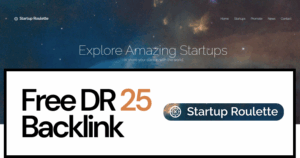If you’re new to the world of Search Engine Optimization (SEO), you’ve come to the right place. This beginner’s guide, “SEO for Beginners: SEO Fundamentals In 2024,” will walk you through the essentials of optimizing your website to improve its visibility and rank higher in search results. You’ll learn the basics of how search engines work, get insights into on-page and off-page SEO, understand the technical aspects of SEO, and discover tips for creating SEO-friendly content. Plus, we’ll explain the importance of using descriptive alt text for images, promoting your website, and setting up a Search Console account to monitor results. By prioritizing your SEO efforts, you can increase your site’s exposure, attract the right audience, and drive qualified traffic and sales.
What Is SEO?

Credits: semrush.com?
Search Engine Optimization (SEO) is the practice of enhancing the visibility and ranking of a website on search engine results pages (SERPs). This process involves optimizing the website’s content, structure, and technical elements to make it more attractive to search engines like Google. The goal of SEO is to increase organic (non-paid) traffic to the website through higher rankings for relevant search queries.
SEO matters because the majority of online experiences begin with a search engine. Higher visibility in search results can lead to more traffic, which can result in increased brand awareness, leads, and sales. With billions of searches conducted every day, appearing on the first page of search results can significantly impact your business’s success. Furthermore, users are more likely to trust and click on links that appear on the first page, making SEO crucial for building credibility.
There are several types of SEO, each targeting different aspects of a website’s optimization:
-
On-Page SEO: Focuses on optimizing individual webpages to rank higher. This includes keyword research, content creation, meta tags, and internal linking.
-
Off-Page SEO: Involves activities outside the website to improve its ranking, such as backlink building, social media marketing, and influencer outreach.
-
Technical SEO: Ensures that a website meets the technical requirements of search engines. Key elements include site speed, mobile-friendliness, crawlability, and secure connections (HTTPS).
-
Local SEO: Targets local search queries by optimizing a business’s online presence for local search. This includes managing Google My Business listings and local citations.
How Search Engines Work
Search engines work by using processes called crawling and indexing. Crawling involves bots, often called spiders or crawlers, that scan web pages for new and updated content. These bots follow links from one page to another to gather data. Once the data is collected, it is stored in an index, a giant database of all the web pages that have been discovered. This index helps search engines quickly find relevant information when users perform a search.
Understanding algorithms is essential for grasping how search engines determine the ranking of web pages. Algorithms are complex sets of rules and calculations used to deliver the most relevant results to a user’s query. These algorithms consider hundreds of factors, such as keywords, page content, and user engagement, to judge the relevance and quality of a web page. Search engines frequently update their algorithms to improve search results and reduce the impact of spammy tactics.
Various search engine ranking factors influence how a page appears in the search results. Some of the primary factors include:
– Content Quality: High-quality, original content that provides value to users.
– Keywords: Proper usage of relevant keywords in the content, titles, and meta descriptions.
– User Experience: A well-designed, fast-loading website with easy navigation.
– Backlinks: Links from other reputable sites pointing to your content.
– Mobile-Friendliness: Ensuring the site works well on mobile devices.
These factors, among others, help search engines determine the best pages to answer a user’s search query.
Getting Started with SEO

Credits: webhostingsun.com
Before diving into SEO, it’s essential to set up your website properly. Choose a reliable hosting service that ensures your site experiences minimal downtime and fast loading speeds. Use a content management system (CMS) like WordPress, which is beginner-friendly and offers various SEO plugins to streamline your optimization efforts. Make sure your site is mobile-friendly, as a significant amount of traffic comes from mobile devices. Also, have a clear site structure to ensure visitors and search engines can navigate your website easily.
Conducting keyword research is a crucial step in any SEO strategy. Start by identifying words and phrases that potential visitors might use to find your site. Tools like Google Keyword Planner, SEMrush, and Ahrefs can help uncover relevant keywords with high search volumes and low competition. Focus on long-tail keywords, which are more specific and often less competitive, giving your site a better chance to rank. Organize your keywords into groups based on themes or topics to make content creation easier.
Creating SEO-friendly content involves more than just using the right keywords. Your content should be informative, engaging, and valuable to your audience. Use keywords naturally within your content, including in headings, subheadings, and throughout the body text. Ensure your content is easily readable by breaking it into short paragraphs and using bullet points or numbered lists where appropriate. Incorporate internal and external links to provide additional value and improve your site’s authority. Don’t forget to optimize images with alt text and proper file names, and regularly update your content to keep it fresh and relevant.
On-Page SEO Basics
Title tags are one of the first things search engines and users see on a webpage. To optimize your title tags, keep them under 60 characters and ensure they include relevant keywords. For example, instead of using a generic title like ‘Home’, use something descriptive like ‘Best Homemade Pizza Recipes’. This helps users understand what the page is about and can improve click-through rates.
Headers and subheaders help organize your content, making it easier for readers to navigate. Use H1 tags for your main headings and H2, H3 tags for subheadings. Each page should only have one H1 tag that clearly states the main topic of the page. Subheaders should include secondary keywords and provide a breakdown of the content. This not only helps with readability but also signals to search engines what the different sections of your page are about.
Meta descriptions are short summaries that appear under the title tag in search results. Though not a direct ranking factor, a well-crafted meta description can improve click-through rates. Keep meta descriptions under 160 characters and make them compelling by including a call to action and relevant keywords. For instance, ‘Discover our easy-to-follow homemade pizza recipes that will make you a kitchen star. Click to learn more!’
Off-Page SEO Basics
Building quality backlinks is crucial for improving your website’s authority and search engine ranking. Focus on acquiring backlinks from reputable and relevant websites in your industry. This can be achieved by creating high-quality content that others want to link to, such as informative blog posts, comprehensive guides, or unique research findings.
Using social media effectively can boost your off-page SEO efforts. Share your content across various platforms like Facebook, Twitter, LinkedIn, and Instagram to increase its visibility. Engage with your audience by responding to comments, participating in discussions, and sharing relevant content from others. This can help build a community around your brand and encourage more people to link to your content.
Guest blogging is a powerful strategy for building your backlink profile. Approach reputable websites in your niche and offer to write valuable content for their audience. In return, you can include a backlink to your own website within the article. Make sure the content is high-quality and relevant to both the host site and your own audience. Developing relationships with other bloggers and website owners can also lead to more opportunities for guest blogging and backlinking in the future.
Technical SEO Basics

Credits: quattr.com
Improving site speed is crucial for better user experience and search engine rankings. Faster-loading pages reduce bounce rates and can lead to higher engagement. To improve your site speed, minimize heavy images, leverage browser caching, and reduce server response times. Tools like Google PageSpeed Insights and GTmetrix can help you identify and fix performance issues.
Ensuring mobile-friendliness is vital in today’s digital landscape where many users browse websites on their phones. A mobile-friendly site adapts to different screen sizes and provides a seamless experience across all devices. Implement responsive design techniques and use Google’s Mobile-Friendly Test to check if your site meets mobile usability standards.
Using HTTPS instead of HTTP is important for website security and can also improve your search ranking. HTTPS encrypts data between the user’s browser and your server, ensuring that sensitive information remains secure. Search engines like Google also favor HTTPS sites, giving them a slight ranking boost. You can obtain an SSL certificate from your web host or through services like Let’s Encrypt.
SEO Analytics Basics
Setting up Google Analytics is your first step towards mastering SEO analytics. Start by signing up for a free Google Analytics account. Once you have an account, create a property for your website and follow the setup instructions. You’ll need to install a tracking code on your website to start collecting data. This code helps you track and report website traffic. Make sure to verify your property with Google Search Console for comprehensive data analysis. This initial setup will give you insights into user behavior, traffic sources, and overall site performance.
Using Google Search Console is crucial for SEO beginners. After verification, Google Search Console provides crucial data about your site’s visibility on Google. You can see which queries bring users to your site, view their click-through rates, and understand how your pages appear in search results. It’s also helpful for identifying and fixing technical issues like crawl errors. Utilize the URL inspection tool to ensure your pages are indexed correctly. The performance report will become essential in tracking and improving your SEO efforts over time.
Tracking key metrics is essential for measuring your SEO success. Some fundamental metrics include organic traffic, bounce rate, and average session duration. Organic traffic measures the number of visitors coming from search engines. Bounce rate indicates the percentage of visitors who leave your site after viewing only one page, while average session duration shows how long visitors spend on your site. Other important metrics include conversion rates, click-through rates, and keyword rankings. Regularly monitoring these metrics helps you understand what works and what needs improvement. Use these insights to make data-driven decisions to optimize your website performance.
| Tool | Purpose | Key Features |
|---|---|---|
| Google Analytics | Track website traffic and user behavior | Real-time data, Customizable reports, Audience insights |
| Google Search Console | Monitor website performance in search results | Performance reports, Index coverage, Search queries |
| SEMrush | Conduct keyword research, track rankings, and analyze competitors | Keyword analytics, Competitor analysis, Site audit |
| Ahrefs | Backlink analysis and keyword research | Backlink checker, Keyword explorer, Site explorer |
| Moz | SEO software with a focus on site audits and keyword tracking | Site audits, Rank tracking, Keyword research |
Tips for Effective SEO
Regularly updating your content is crucial for maintaining and improving your website’s search engine ranking. Fresh content signals to search engines that your site is active and relevant. By updating old posts with new information, adding new keywords, and refining your SEO strategies, you can keep your content current. For example, if you run a blog on digital marketing, update your older posts with the latest trends and data. This can improve user engagement and boost your rankings.
Avoiding SEO pitfalls is just as important as implementing effective strategies. Common mistakes include keyword stuffing, using duplicate content, and neglecting mobile optimization. Keyword stuffing, or overusing keywords to manipulate ranking, can lead to penalties from search engines. Instead, use keywords naturally within your content. Duplicate content can also harm your SEO efforts because search engines may have difficulty deciding which version to rank. Always strive to create unique, informative content. Lastly, with the increasing use of mobile devices, ensuring that your site is mobile-friendly is crucial for a high ranking.
Staying updated with SEO trends is essential as search engine algorithms evolve. Subscribe to industry blogs, follow SEO experts on social media, and participate in online forums to stay informed. For instance, Google’s algorithm updates can significantly impact your ranking, making it necessary to adapt your strategies accordingly. Keeping abreast of new SEO tools and techniques can also provide a competitive edge. Regularly auditing your website and adjusting your SEO plan based on the latest trends will help you maintain and improve your search engine performance.
Frequently Asked Questions
1. What is SEO, and why is it important for my website?
SEO stands for Search Engine Optimization. It’s a way to make your website show up higher in search engine results like Google. This helps more people find your site and can increase traffic and sales.
2. How do search engines decide which websites to show first?
Search engines use algorithms to look at things like keywords, website quality, and how often your site is updated. They try to show the best and most relevant results for what people are searching.
3. What are keywords, and how should I use them?
Keywords are the words and phrases that people type into search engines. You should use them in your website’s content, titles, and descriptions so search engines know what your site is about.
4. What is the difference between on-page and off-page SEO?
On-page SEO involves things you do on your website, like using keywords and creating quality content. Off-page SEO involves actions outside your website, like getting other sites to link to you.
5. How long does it take to see results from SEO efforts?
SEO is a long-term strategy, and it can take several months to start seeing significant results. It depends on your niche, competition, and how much effort you put into optimizing your site.
TL;DR: SEO, or Search Engine Optimization, involves optimizing your website to rank higher on search engines. Key elements include understanding how search engines crawl and index sites, and what algorithms determine ranking factors. Start by setting up a website, conducting keyword research, and creating SEO-friendly content. On-page SEO focuses on optimizing title tags, headers, subheaders, and meta descriptions. Off-page SEO involves building quality backlinks, using social media, and guest blogging. Technical SEO ensures your site loads quickly, is mobile-friendly, and uses HTTPS. Track progress with Google Analytics and Search Console, monitor key metrics, and update content regularly. Avoid common SEO pitfalls and stay updated with evolving trends.




